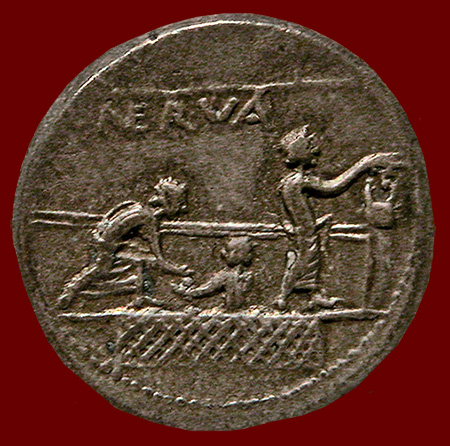

The conduct of political affairs was heavily dominated by the senatorial class, particularly by a small number of noble families. The upper classes generally followed one of two informal political factions:
This is how the historian Sallust (mid-first century BCE) described the two political factions during his lifetime:
After the restoration of the power of the tribunes in the consulship of Pompey and Crassus, this very important office was obtained by certain men whose youth intensified their natural aggressiveness. These tribunes began to rouse the mob by inveighing against the Senate, and then inflamed popular passion still further by handing out bribes and promises, whereby they won renown and influence for themselves. They were strenuously opposed by most of the nobility, who posed as defenders of the Senate but were really concerned to maintain their own privileged position. The whole truth—to put it in a word—is that although all disturbers of the peace in this period put forward specious pretexts, claiming either to be protecting the rights of the people or to be strengthening the authority of the Senate, this was mere pretence: in reality, every one of them was fighting for his personal aggrandizement. Lacking all self-restraint, they stuck at nothing to gain their ends, and both sides made ruthless use of any successes they won. (Sallust Bellum Catilinae 38, translated by S. A. Handford [Penguin Classics, 1963], 204-205)
Campaigning: Personal wealth was essential for political office, since no salaries were paid and the process of campaigning was very expensive; showmanship was essential. See an important setting for Roman politics and find out more about campaigning by visiting the Rostra in VRoma via the web gateway or the anonymous browser (be sure to click on the capsa and read what's inside) .
Voting: By the late second century BCE, there were two assemblies where adult Roman male citizens voted for candidates in elections and for proposed legislation, the Assembly of the Centuries and the Assembly of the Tribes (see Roman Government). Citizens voted in groups (centuries or tribes), entering a roped-off area and prceeding single file over raised gangways (pontes, “bridges”). The voting procedure is depicted on the coin above (see also this drawing of the coin), issued by the moneyer P. Licinius Nerva in 113-112 BCE. An attendant handed each voter a small wooden tablet covered with wax on which he inscribed his vote: V (for uti rogas, “as you propose” to support a bill), A (for antiquo, “I vote against,” to oppose a bill), or the candidate's name in an election. He then dropped the tablet into a tall urn (cista). This was a time-consuming process requiring large spaces, so most voting was conducted in the Campus Martius. Julius Caesar began a large building for the electoral process in this area, the Saepta Julia, which was completed by Marcus Agrippa in 26 BCE during the reign of Augustus. To find out more, visit the Saepta Julia in VRoma via the web gateway or the anonymous browser.
Women: Women were excluded by law from any political role; they could not vote or hold office. Upper-class women, however, had the possibility of behind-the-scenes influence, because they could possess and control wealth, could move about in public freely without losing respectability, and could represent their birth families in various ways, especially by cementing family alliances through marriage.
Barbara F. McManus, The
College of New Rochelle
bmcmanus@cnr.edu
revised July,
2003